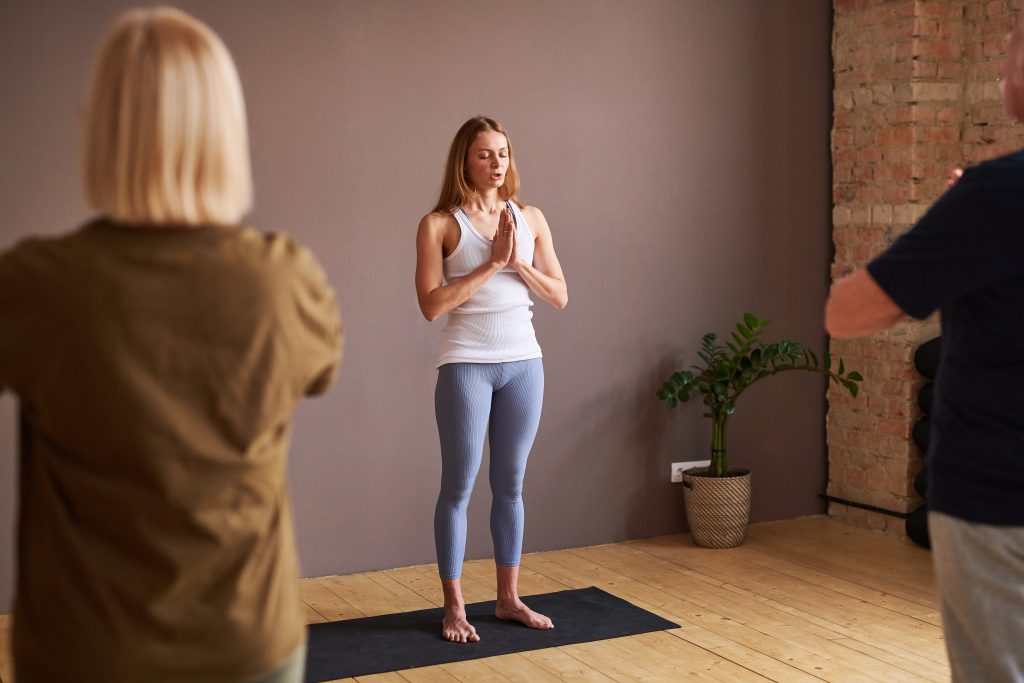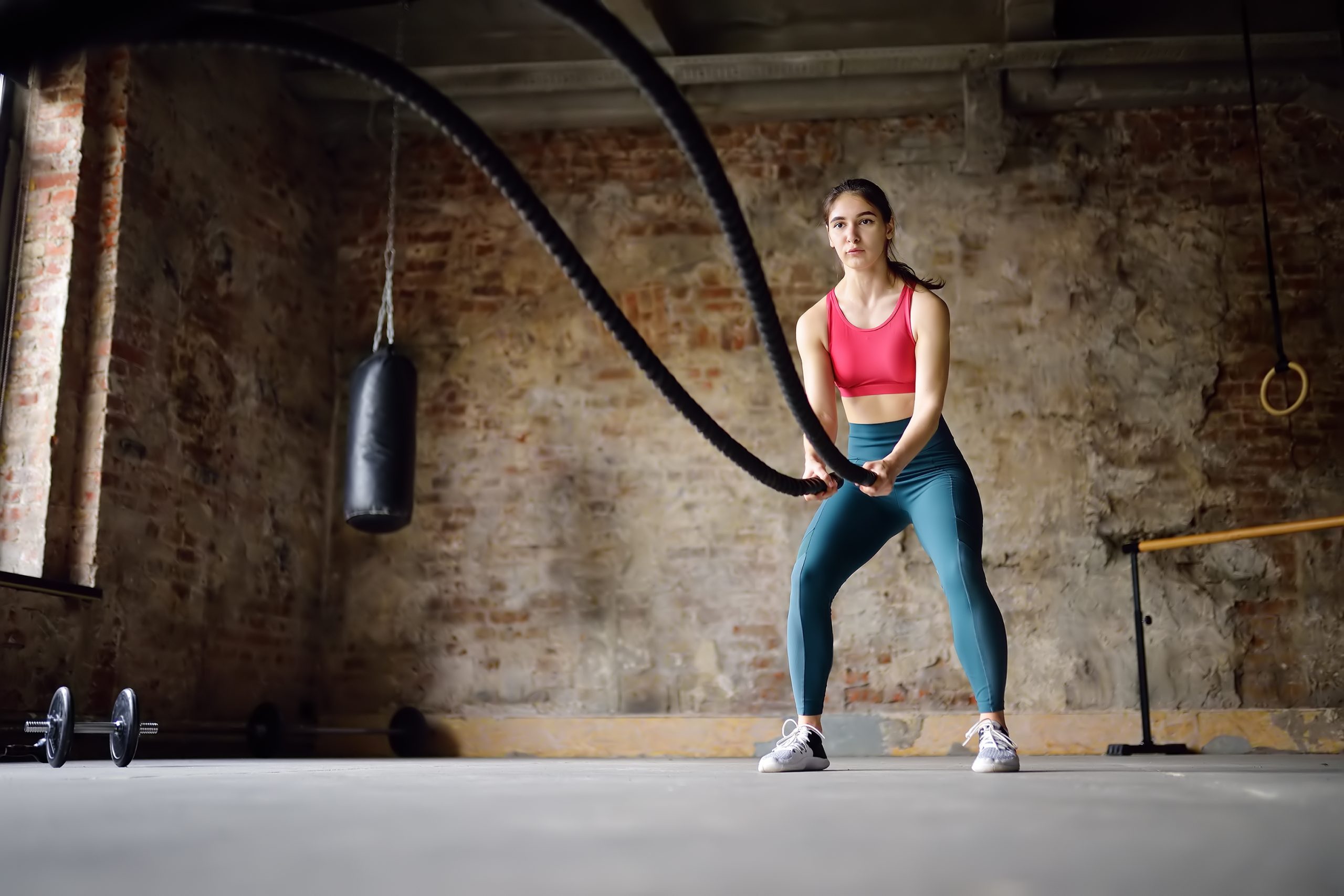Fitness is about so much more than just looking good. It’s about feeling great, maintaining a healthy lifestyle, and reaping the many benefits of physical activity. For adults, staying fit can be a challenge, but it doesn’t have to be. With the right strategies and advice, anyone can become and stay fit. Whether you are looking to lose weight, manage chronic health conditions, or simply maintain your current fitness level, this article will give you the essential advice you need to succeed in your fitness goals. So let’s get started – do you want to learn the secrets of successful adult fitness?

Physical Activity Guidelines
Physical activity guidelines suggest adults should strive for at least 150 minutes of moderate-intensity aerobic activity per week plus muscle-strengthening activities that involve all major muscle groups on two days per week. This amount of physical activity can lower the risk of developing chronic illnesses such as type 2 diabetes and certain types of cancer, improve bone density and strength, increase muscle tone, and reduce stress levels. Additionally, it can help you reach specific fitness goals such as weight loss or increased strength.
In addition to meeting the physical activity recommendations, periods should be dedicated to vigorous activity too. Vigorous activities are those that make your heart beat faster and cause you to break a sweat. Examples include running, swimming, hill walking, or cycling. Although it’s important to engage in activities that challenge your body such as these, it’s also important to listen to your body; if something hurts then stop!
Finally, don’t forget the mental health benefits associated with exercise; regular physical activity can reduce symptoms of depression and improve social interactions by fostering better relationships with friends and family members. Exercise is an important part of maintaining a healthy lifestyle so make sure you make time for it in your routine!
Getting regular physical activity is a crucial part of leading a healthy lifestyle. Take the time to prioritize your health and reap the rewards that come with it – increased energy, improved mental health, and a stronger body! Now let’s explore the different types of physical activity available to you and learn how to make exercise fun and enjoyable.
Types of Physical Activity
Physical activity is an important part of leading a healthy lifestyle. Different types of physical activities can be performed to fit individual needs and interests. Aerobic exercise, such as walking, jogging, swimming, or biking, is great for increasing your heart rate and improving your cardiovascular health. Strength training exercises, like weight lifting or bodyweight exercises such as push-ups, help build muscle and improve bone density.
In addition to traditional exercise methods, there are also other forms of physical activity to consider. Participating in group sports or classes such as yoga or pilates can be fun and beneficial for both the mind and body. Even simple things like taking the stairs instead of the elevator or walking to work can add up over time to improve your overall physical health.
When creating an exercise program it is important to remember that all activity should be enjoyable and tailored to meet your individual needs. If you don’t enjoy it then chances are you won’t stick with it! Find activities that interest you, challenge your body without pushing too hard, and always listen to your body when participating in physical activity; pain should never be ignored!
How Much Activity Should Adults Do?
Adults should strive to achieve at least 150 minutes of moderate-intensity aerobic activity or 75 minutes of vigorous-intensity aerobic activity each week, or an equivalent combination of the two. Additionally, adults should also complete muscle-strengthening activities involving all major muscle groups at least two days per week. It is important to remember that physical activity does not need to be done all at once and can be broken up into smaller periods throughout the day.
For those looking to improve their health, additional benefits can be seen with more physical activity. Increasing the amount and intensity of exercise can result in even greater health benefits such as improved blood pressure, quality of life, and mental health. Physical activity can also help reduce the risks associated with chronic health conditions, such as some types of cancer and depression symptoms, as well as aid in weight loss and maintaining a healthy weight.
No matter your fitness goals, regular physical activity is essential for overall good health. By engaging in a variety of activities that are tailored to your individual needs and interests you will find success in achieving these goals!
Identifying Your Goals
Identifying your fitness goals is an important first step to achieving success in any exercise program. Knowing what it is that you want to achieve can help you create a plan that works for you and ultimately helps you reach those goals. It is important to set realistic and achievable goals, as this will make the process of reaching them much easier. Goals can vary greatly depending on the person, but some common objectives include increased strength and endurance, losing weight, improving cardiovascular health, or reducing stress levels.
When setting goals it is also important to consider your circumstances such as age, lifestyle, and physical limitations. This will ensure that the goals are tailored specifically to you and are achievable within the time frame that works best for you. Additionally, it may be helpful to break down large goals into smaller ones so that they do not seem too daunting or overwhelming. Remember: there is no one-size-fits-all approach when it comes to fitness; everyone’s needs are unique! Setting specific, achievable goals can be a great way to stay motivated and track progress over time toward a healthy lifestyle.
Finding the Right Exercise Program for You
Finding the right exercise program for you is an important part of achieving your fitness goals. There are many different types of exercises and activities to choose from, so it is important to consider your individual needs and preferences when selecting a program.
Start by assessing your current physical condition and health goals. This will help you determine what type of exercise is best suited for you. For example, if you are looking to lose weight, then aerobic activities such as running or swimming may be more beneficial than strength-training exercises that focus on muscle building. Alternatively, if you have existing joint issues or chronic health conditions, then low-impact activities such as walking or cycling may be better suited for your needs.
Once you have identified the type of activity that is most suitable for your individual needs and goals, it is important to set realistic expectations about how often and how long you should commit to exercising each week. Generally speaking, adults should aim for at least 150 minutes of moderate-intensity aerobic activity per week or 75 minutes of vigorous activity to maintain their physical health. Additionally, it is recommended that adults include two sessions of muscle-strengthening activities throughout the week to build muscular strength and endurance.
Remember that finding the right exercise program can take time; don’t give up if something doesn’t work out! With a little bit of patience and dedication, you will find an exercise plan that works best for you and fits into your lifestyle.
Vigorous vs. Moderate Intensity Activities
When it comes to exercise, it is important to understand the difference between vigorous and moderate-intensity activities. Vigorous-intensity activities require more effort and energy than moderate-intensity activities. These activities tend to involve large muscle groups working at a high level of intensity for extended periods, such as running or swimming. Moderate-intensity activities are performed at a lower level of exertion, such as walking or cycling.
Research has shown that vigorous-intensity physical activity can provide greater health benefits in terms of risk prevention for major medical conditions such as cardiovascular disease, stroke, and some types of cancer. These activities can also help with weight loss and management, as well as reducing symptoms of depression and improving overall mental health.
However, it is important to note that everyone’s fitness level is different, so individuals should start slowly with moderate-intensity activities until they reach an appropriate level of fitness before progressing to more intense physical activities. It is also recommended to combine both types of exercise into your weekly routine to get the most out of your workout.
Ultimately, if you are looking for ways to improve your physical health and quality of life, regular exercise is essential. By understanding the differences between vigorous and moderate-intensity activities and incorporating both into your weekly routine, you will be able to reap the many benefits that exercise has to offer!
Major Muscle Groups to Target
Strength training is an important component of any exercise routine, as it helps to build muscle and strength, improve balance and coordination, and reduce the risk of injury. Major muscle groups that should be targeted during strength training include the chest, back, shoulders, arms, legs, core muscles, and glutes. Each of these muscle groups can be worked in a variety of ways such as using free weights or machines. When targeting these muscles it’s important to remember to use proper form and follow a program designed to meet your individual fitness goals.
In addition to incorporating major muscle groups into your strength training routine, including exercises for smaller muscles such as the rotator cuff muscles or hip flexors can help improve overall performance and reduce the risk of injury. It is also important to allow adequate time for rest between workouts to give your body time to recover and prepare for the next session.
By focusing on major muscle groups during strength training sessions and allowing time for rest between workouts you will be able to achieve maximum results from your exercise program while avoiding potential injuries. Incorporating regular strength training into your exercise routine will help you reach your physical fitness goals while also providing numerous health benefits that come with an active lifestyle.
Periods for Exercise Sessions
The amount of time dedicated to physical activity and exercise is an important factor when it comes to achieving fitness goals and improving overall health. Additionally, adults should engage in muscle-strengthening activities on two or more days a week that target all major muscle groups.
However, the amount of time dedicated to physical activity can vary depending on one’s individual goals and needs. For those who are looking to lose weight or maintain a healthy weight, additional time for aerobic exercise may be beneficial as this type of activity is known for its effects on weight loss and metabolism. Similarly, those with chronic health conditions such as high blood pressure may need to increase their aerobic activity levels to manage symptoms effectively.
Whether you are looking to improve your physical health or enhance your quality of life, dedicating periods to regular exercise sessions is essential. Not only will regular exercise help you reach your fitness goals but research has also shown that it can have positive mental health benefits such as reduced symptoms of depression and improved cognitive function.
Weight Loss and Healthy Weight Management Advice
Maintaining a healthy weight is an important aspect of overall wellness. Excess weight can increase the risk of developing certain chronic health conditions and can cause physical discomfort. Weight loss can be achieved through a combination of healthy eating habits and regular physical activity.
When attempting to lose weight, adults should focus on creating sustainable lifestyle changes rather than short-term, restrictive diets. This includes eating meals that are composed of mostly fruits, vegetables, lean proteins, whole grains, and low-fat dairy products. Additionally, adults should aim for at least 30 minutes of moderate aerobic exercise five days per week to promote weight loss and improve cardiovascular health.
In addition to aerobic exercise, adults should also incorporate muscle-strengthening activities into their fitness routine at least two days per week. Activities such as push-ups or weight lifting can help build strength and tone muscles while promoting improved balance and coordination.
Finally, individuals attempting to lose weight should consult with their healthcare provider before beginning any type of diet or exercise regimen. This will ensure safety and effectiveness while also helping individuals create realistic goals that they can work towards over time.
By making small changes to your lifestyle, such as healthy eating and regular physical activity, you can enjoy the benefits of improved health and weight loss. Ready to get active? Next, find out how active living can help you reach your fitness goals!
Active Living to Promote Healthy Weight Loss & Maintenance
Active living is a lifestyle that focuses on physical activity and healthy eating habits to improve overall health. Participating in regular physical activities can help adults maintain a healthy weight while also providing numerous other health benefits. Active living includes a variety of activities from walking or jogging to swimming or playing sports.
The U.S. Department of Health and Human Services recommends that most adults should aim for at least 150 minutes of moderate aerobic activity per week; this can be broken up into 30-minute sessions throughout the week. In addition, adults should also incorporate muscle-strengthening activities into their routine at least two days per week, such as push-ups or weight lifting.
Active living has many benefits beyond weight loss, including improved mental and physical health, increased energy levels, better sleep quality, and lower risk of certain types of cancer and heart disease. Additionally, regular physical activity has been linked to a reduced risk of symptoms associated with depression and anxiety disorders.
So if you’re looking to lose weight or just want to promote better overall health, active living may be the perfect choice for you! Making small changes to your lifestyle like increasing your daily activity level can have positive effects on your health and well-being over time.

Conclusion & Summary
In conclusion, active living is an important part of maintaining a healthy lifestyle. Participating in regular physical activities can help adults maintain a healthy weight while also providing numerous other health benefits. The U.S. Department of Health and Human Services recommends that most adults should aim for at least 150 minutes of moderate aerobic activity per week and incorporate muscle-strengthening activities into their routine at least two days per week. Active living has many benefits beyond weight loss, including improved mental and physical health, increased energy levels, better sleep quality, and lower risk of certain types of cancer and heart disease. Making small changes to your lifestyle like increasing your daily activity level can have positive effects on your health and well-being over time.
Fitness is about so much more than just looking good. It’s about feeling great, maintaining a healthy lifestyle, and reaping the many benefits of physical activity. For adults, staying fit can be a challenge, but it doesn’t have to be. With the right strategies and advice, anyone can become and stay fit. Whether you are looking to lose weight, manage chronic health conditions, or simply maintain your current fitness level, this article will give you the essential advice you need to succeed in your fitness goals. So let’s get started – do you want to learn the secrets of successful adult fitness?
Physical Activity Guidelines
Physical activity guidelines suggest adults should strive for at least 150 minutes of moderate-intensity aerobic activity per week plus muscle-strengthening activities that involve all major muscle groups on two days per week. This amount of physical activity can lower the risk of developing chronic illnesses such as type 2 diabetes and certain types of cancer, improve bone density and strength, increase muscle tone, and reduce stress levels. Additionally, it can help you reach specific fitness goals such as weight loss or increased strength.
In addition to meeting the physical activity recommendations, periods should be dedicated to vigorous activity too. Vigorous activities are those that make your heart beat faster and cause you to break a sweat. Examples include running, swimming, hill walking, or cycling. Although it’s important to engage in activities that challenge your body such as these, it’s also important to listen to your body; if something hurts then stop!
Finally, don’t forget the mental health benefits associated with exercise; regular physical activity can reduce symptoms of depression and improve social interactions by fostering better relationships with friends and family members. Exercise is an important part of maintaining a healthy lifestyle so make sure you make time for it in your routine!
Getting regular physical activity is a crucial part of leading a healthy lifestyle. Take the time to prioritize your health and reap the rewards that come with it – increased energy, improved mental health, and a stronger body! Now let’s explore the different types of physical activity available to you and learn how to make exercise fun and enjoyable.
Types of Physical Activity
Physical activity is an important part of leading a healthy lifestyle. Different types of physical activities can be performed to fit individual needs and interests. Aerobic exercise, such as walking, jogging, swimming, or biking, is great for increasing your heart rate and improving your cardiovascular health. Strength training exercises, like weight lifting or bodyweight exercises such as push-ups, help build muscle and improve bone density.
In addition to traditional exercise methods, there are also other forms of physical activity to consider. Participating in group sports or classes such as yoga or pilates can be fun and beneficial for both the mind and body. Even simple things like taking the stairs instead of the elevator or walking to work can add up over time to improve your overall physical health.
When creating an exercise program it is important to remember that all activity should be enjoyable and tailored to meet your individual needs. If you don’t enjoy it then chances are you won’t stick with it! Find activities that interest you, challenge your body without pushing too hard, and always listen to your body when participating in physical activity; pain should never be ignored!
How Much Activity Should Adults Do?
Adults should strive to achieve at least 150 minutes of moderate-intensity aerobic activity or 75 minutes of vigorous-intensity aerobic activity each week, or an equivalent combination of the two. Additionally, adults should also complete muscle-strengthening activities involving all major muscle groups at least two days per week. It is important to remember that physical activity does not need to be done all at once and can be broken up into smaller periods throughout the day.
For those looking to improve their health, additional benefits can be seen with more physical activity. Increasing the amount and intensity of exercise can result in even greater health benefits such as improved blood pressure, quality of life, and mental health. Physical activity can also help reduce the risks associated with chronic health conditions, such as some types of cancer and depression symptoms, as well as aid in weight loss and maintaining a healthy weight.
No matter your fitness goals, regular physical activity is essential for overall good health. By engaging in a variety of activities that are tailored to your individual needs and interests you will find success in achieving these goals!
Identifying Your Goals
Identifying your fitness goals is an important first step to achieving success in any exercise program. Knowing what it is that you want to achieve can help you create a plan that works for you and ultimately helps you reach those goals. It is important to set realistic and achievable goals, as this will make the process of reaching them much easier. Goals can vary greatly depending on the person, but some common objectives include increased strength and endurance, losing weight, improving cardiovascular health, or reducing stress levels.
When setting goals it is also important to consider your circumstances such as age, lifestyle, and physical limitations. This will ensure that the goals are tailored specifically to you and are achievable within the time frame that works best for you. Additionally, it may be helpful to break down large goals into smaller ones so that they do not seem too daunting or overwhelming. Remember: there is no one-size-fits-all approach when it comes to fitness; everyone’s needs are unique! Setting specific, achievable goals can be a great way to stay motivated and track progress over time toward a healthy lifestyle.
Finding the Right Exercise Program for You
Finding the right exercise program for you is an important part of achieving your fitness goals. There are many different types of exercises and activities to choose from, so it is important to consider your individual needs and preferences when selecting a program.
Start by assessing your current physical condition and health goals. This will help you determine what type of exercise is best suited for you. For example, if you are looking to lose weight, then aerobic activities such as running or swimming may be more beneficial than strength-training exercises that focus on muscle building. Alternatively, if you have existing joint issues or chronic health conditions, then low-impact activities such as walking or cycling may be better suited for your needs.
Once you have identified the type of activity that is most suitable for your individual needs and goals, it is important to set realistic expectations about how often and how long you should commit to exercising each week. Generally speaking, adults should aim for at least 150 minutes of moderate-intensity aerobic activity per week or 75 minutes of vigorous activity to maintain their physical health. Additionally, it is recommended that adults include two sessions of muscle-strengthening activities throughout the week to build muscular strength and endurance.
Remember that finding the right exercise program can take time; don’t give up if something doesn’t work out! With a little bit of patience and dedication, you will find an exercise plan that works best for you and fits into your lifestyle.
Vigorous vs. Moderate Intensity Activities
When it comes to exercise, it is important to understand the difference between vigorous and moderate-intensity activities. Vigorous-intensity activities require more effort and energy than moderate-intensity activities. These activities tend to involve large muscle groups working at a high level of intensity for extended periods, such as running or swimming. Moderate-intensity activities are performed at a lower level of exertion, such as walking or cycling.
Research has shown that vigorous-intensity physical activity can provide greater health benefits in terms of risk prevention for major medical conditions such as cardiovascular disease, stroke, and some types of cancer. These activities can also help with weight loss and management, as well as reducing symptoms of depression and improving overall mental health.
However, it is important to note that everyone’s fitness level is different, so individuals should start slowly with moderate-intensity activities until they reach an appropriate level of fitness before progressing to more intense physical activities. It is also recommended to combine both types of exercise into your weekly routine to get the most out of your workout.
Ultimately, if you are looking for ways to improve your physical health and quality of life, regular exercise is essential. By understanding the differences between vigorous and moderate-intensity activities and incorporating both into your weekly routine, you will be able to reap the many benefits that exercise has to offer!
Major Muscle Groups to Target
Strength training is an important component of any exercise routine, as it helps to build muscle and strength, improve balance and coordination, and reduce the risk of injury. Major muscle groups that should be targeted during strength training include the chest, back, shoulders, arms, legs, core muscles, and glutes. Each of these muscle groups can be worked in a variety of ways such as using free weights or machines. When targeting these muscles it’s important to remember to use proper form and follow a program designed to meet your individual fitness goals.
In addition to incorporating major muscle groups into your strength training routine, including exercises for smaller muscles such as the rotator cuff muscles or hip flexors can help improve overall performance and reduce the risk of injury. It is also important to allow adequate time for rest between workouts to give your body time to recover and prepare for the next session.
By focusing on major muscle groups during strength training sessions and allowing time for rest between workouts you will be able to achieve maximum results from your exercise program while avoiding potential injuries. Incorporating regular strength training into your exercise routine will help you reach your physical fitness goals while also providing numerous health benefits that come with an active lifestyle.
Periods for Exercise Sessions
The amount of time dedicated to physical activity and exercise is an important factor when it comes to achieving fitness goals and improving overall health. Additionally, adults should engage in muscle-strengthening activities on two or more days a week that target all major muscle groups.
However, the amount of time dedicated to physical activity can vary depending on one’s individual goals and needs. For those who are looking to lose weight or maintain a healthy weight, additional time for aerobic exercise may be beneficial as this type of activity is known for its effects on weight loss and metabolism. Similarly, those with chronic health conditions such as high blood pressure may need to increase their aerobic activity levels to manage symptoms effectively.
Whether you are looking to improve your physical health or enhance your quality of life, dedicating periods to regular exercise sessions is essential. Not only will regular exercise help you reach your fitness goals but research has also shown that it can have positive mental health benefits such as reduced symptoms of depression and improved cognitive function.
Weight Loss and Healthy Weight Management Advice
Maintaining a healthy weight is an important aspect of overall wellness. Excess weight can increase the risk of developing certain chronic health conditions and can cause physical discomfort. Weight loss can be achieved through a combination of healthy eating habits and regular physical activity.
When attempting to lose weight, adults should focus on creating sustainable lifestyle changes rather than short-term, restrictive diets. This includes eating meals that are composed of mostly fruits, vegetables, lean proteins, whole grains, and low-fat dairy products. Additionally, adults should aim for at least 30 minutes of moderate aerobic exercise five days per week to promote weight loss and improve cardiovascular health.
In addition to aerobic exercise, adults should also incorporate muscle-strengthening activities into their fitness routine at least two days per week. Activities such as push-ups or weight lifting can help build strength and tone muscles while promoting improved balance and coordination.
Finally, individuals attempting to lose weight should consult with their healthcare provider before beginning any type of diet or exercise regimen. This will ensure safety and effectiveness while also helping individuals create realistic goals that they can work towards over time.
By making small changes to your lifestyle, such as healthy eating and regular physical activity, you can enjoy the benefits of improved health and weight loss. Ready to get active? Next, find out how active living can help you reach your fitness goals!
Active Living to Promote Healthy Weight Loss & Maintenance
Active living is a lifestyle that focuses on physical activity and healthy eating habits to improve overall health. Participating in regular physical activities can help adults maintain a healthy weight while also providing numerous other health benefits. Active living includes a variety of activities from walking or jogging to swimming or playing sports.
The U.S. Department of Health and Human Services recommends that most adults should aim for at least 150 minutes of moderate aerobic activity per week; this can be broken up into 30-minute sessions throughout the week. In addition, adults should also incorporate muscle-strengthening activities into their routine at least two days per week, such as push-ups or weight lifting.
Active living has many benefits beyond weight loss, including improved mental and physical health, increased energy levels, better sleep quality, and lower risk of certain types of cancer and heart disease. Additionally, regular physical activity has been linked to a reduced risk of symptoms associated with depression and anxiety disorders.
So if you’re looking to lose weight or just want to promote better overall health, active living may be the perfect choice for you! Making small changes to your lifestyle like increasing your daily activity level can have positive effects on your health and well-being over time.
Conclusion & Summary
In conclusion, active living is an important part of maintaining a healthy lifestyle. Participating in regular physical activities can help adults maintain a healthy weight while also providing numerous other health benefits. The U.S. Department of Health and Human Services recommends that most adults should aim for at least 150 minutes of moderate aerobic activity per week and incorporate muscle-strengthening activities into their routine at least two days per week. Active living has many benefits beyond weight loss, including improved mental and physical health, increased energy levels, better sleep quality, and lower risk of certain types of cancer and heart disease. Making small changes to your lifestyle like increasing your daily activity level can have positive effects on your health and well-being over time.











